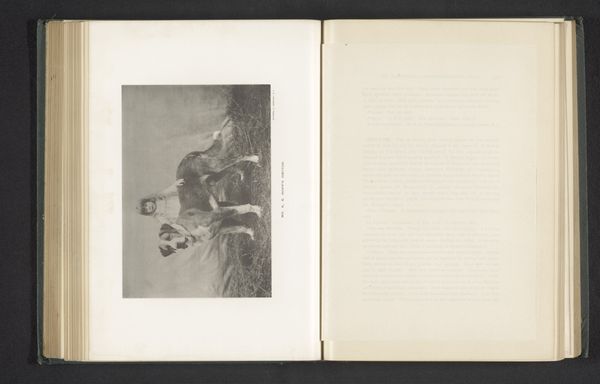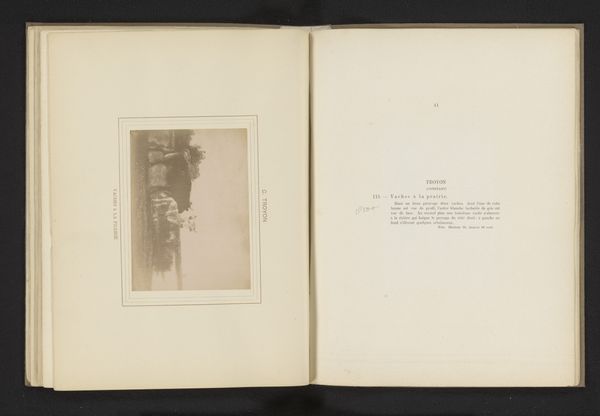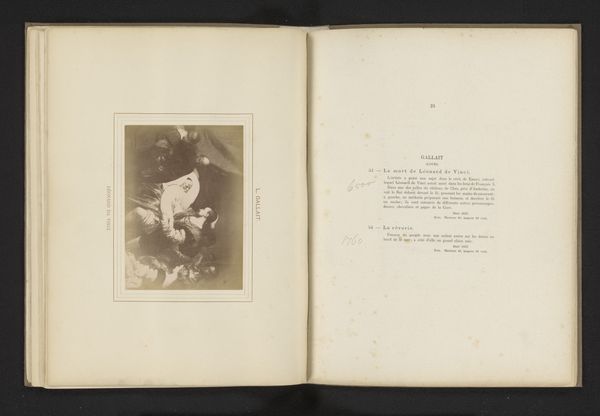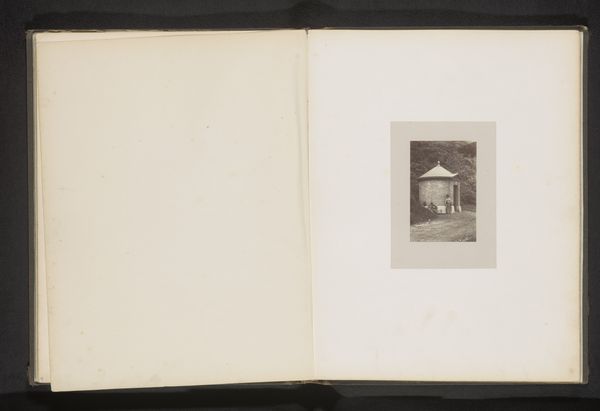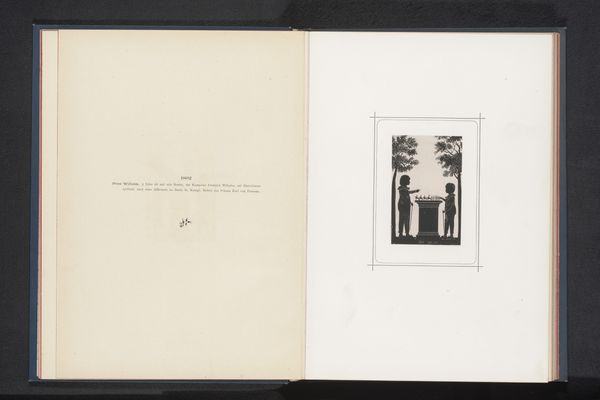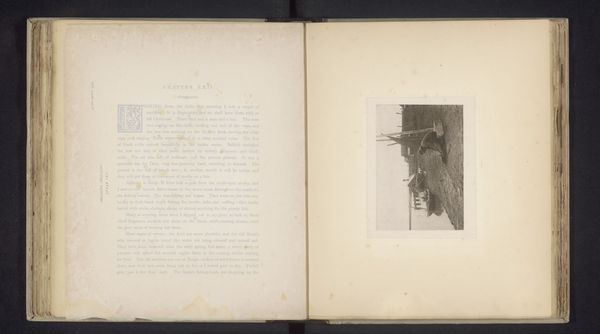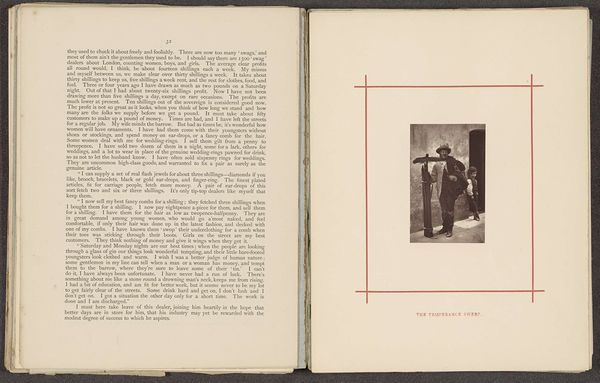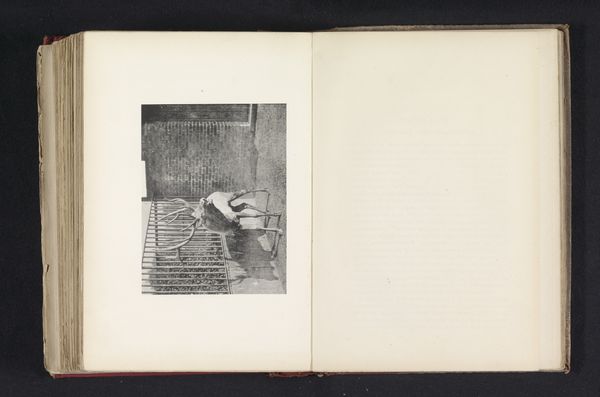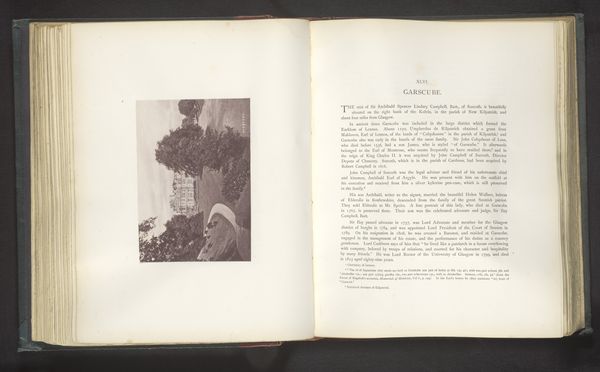
print, paper, photography
# print
#
paper
#
photography
#
japonisme
Dimensions: height 89 mm, width 42 mm
Copyright: Rijks Museum: Open Domain
Editor: This is a page from a book featuring a print titled "Vrouw in een kimono in een interieur," or "Woman in a Kimono in an Interior," by William Kinnimond Burton, created before 1892. The print utilizes photography on paper. I’m immediately struck by the composition; it feels so contained, almost as if the woman is trapped within the frame. What compositional elements contribute to this feeling of confinement? Curator: Note how the tonal range compresses the subject. Shades coalesce to yield an image of contrasts and confined depth; the very dimensions of the artwork seem deliberately proportioned to augment its spatial flatness. Look how the Kimono and set fuse: do you observe how such treatment affects the composition? Editor: It's true; the textures of her kimono and the backdrop blend. How would this deliberate choice serve the composition? Curator: Think about what the image contains. Its subject blends seamlessly into an abstract arrangement that highlights the work's artificiality and manufactured effect, obscuring individual distinction within its very materiality. The formal qualities dictate the whole. What does the interplay of tone and contrast emphasize? Editor: Now I see, it isn't about the figure herself, but about the forms, how the light and dark interact almost independent of the subject depicted! That's a radical interpretation. Curator: Formalism urges that art be considered not for what it represents, but only its intrinsic compositional and material qualities. These qualities can tell you a great deal about art's conceptual function. Editor: That really shifted my perception; thank you for illuminating that way of analyzing visual information! Curator: It is essential to see such intrinsic links that bring to light the artwork's composition. It's an analytical adventure.
Comments
No comments
Be the first to comment and join the conversation on the ultimate creative platform.

